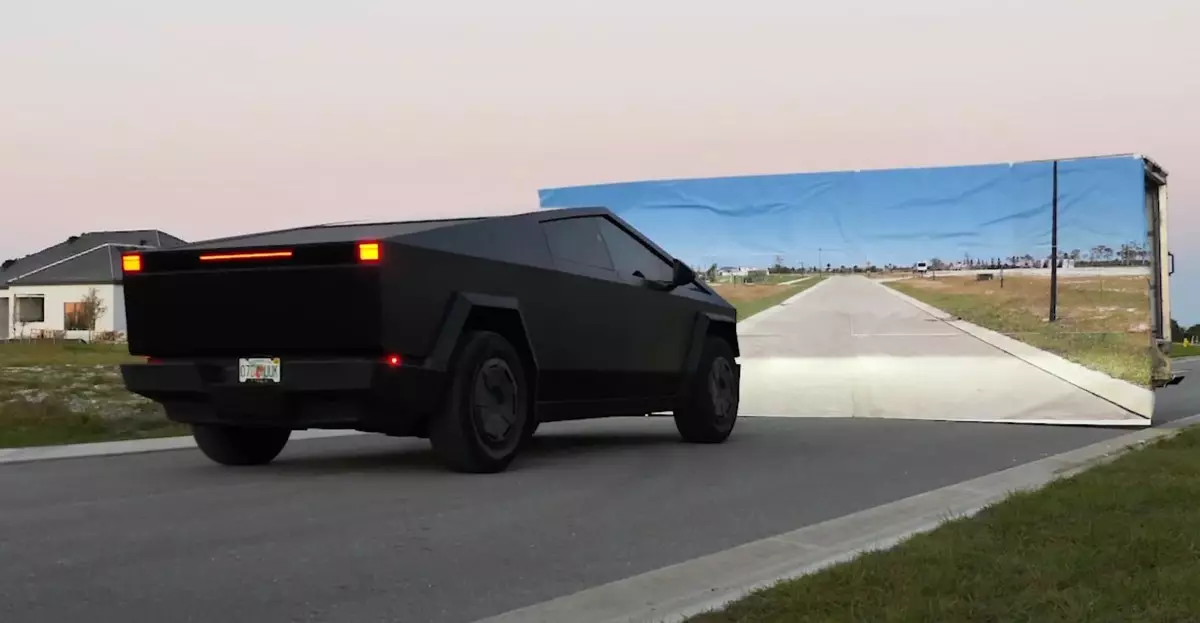In an age dominated by technological advancements, the electric vehicle revolution led by companies like Tesla seems to promise a futuristic vision of transportation. However, challenges persist, particularly when it comes to the reliability of Full Self-Driving (FSD) systems. A recent spectacle on YouTube stirred both intrigue and skepticism, where renowned creator Mark Rober conducted an experiment reminiscent of classic cartoons—specifically, a Wile E. Coyote wall test aimed at evaluating how Tesla’s FSD would react to an apparent obstacle. The results were mixed, sparking debates about the efficacy of autonomous driving systems in real-world applications.
The Initial Experiment: Expectations vs. Reality
Rober’s whimsical yet insightful approach raised critical questions about the FSD capabilities of Tesla vehicles. He painted a faux road stretching into an attractive horizon, to test whether the FSD system could autonomously stop before hitting a faux wall. Unfortunately, as consumers quickly learned, the outcome was less than promising. The vehicle failed to recognize the wall as a hazard, leading to a crash—and a wave of skepticism about the intensity of technology that many would soon rely on for safety. Expectations were set high by Tesla’s marketing, but this experiment illustrated a gap between perception and reality.
A Response from the Tesla Community
Following Rober’s experiment, YouTuber Kyle Paul responded with his analysis, showcasing two different Tesla models: the Model Y equipped with the HW3 computer and the much-anticipated Cybertruck featuring the cutting-edge HW4 and AI4 system. While the Model Y did not manage to avoid the wall—much like Rober’s experience—the Cybertruck provided a glimmer of hope. It successfully detected the wall and halted before impact, showcasing potential advancements in Tesla’s technology. This juxtaposition of results serves as a microcosm of the broader conversation on autonomous vehicles—where innovation and limitations coexist.
Interpreting the Test Results: Hope or Disillusionment?
While the tests reveal some weaknesses in the technology, they also reflect a critical dialogue within the EV community. The mixed results highlight the rapid evolution of automotive technology and the growing pains that inevitably accompany it. On one hand, it is disheartening to see failures in a system that many anticipated would usher in a new era of transportation efficiency and safety. On the flip side, the progress exhibited by the Cybertruck opens the door to more refined solutions that could one day fulfill the promise of completely autonomous driving.
Cultivating Realistic Expectations
Consumers and enthusiasts alike must approach these continual advancements with tempered optimism. The allure of FSD comes with the expectation of safety and reliability, traits that are paramount in vehicle technology. The tests serve as reminders that while Tesla is at the forefront of innovative electric mobility, it still grapples with complexities that require time, research, and fine-tuning. Ultimately, the ambition for fully autonomous vehicles is not an impossible dream, but the journey towards that reality will undoubtedly involve hurdles, recalibrations, and necessary discussions that will shape the future of transportation.

